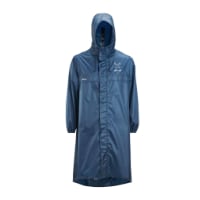- Time of past OR future Camino
- CF 2014, 2015, 2022
Got back from my second Camino Frances and thought I would share something that might help increase the chance of completing your next Camino: start out slow and doing lower mileage for at least a week. Last year I hiked with young and not so young folks who decided for whatever reason that they needed to do big miles and hike fast enough to stay with a particular group of people. A lot of them ended up with all sorts of overuse injuries. This year I hiked intermittently with folks that were strong hikers but ended up exceeding their physiologic limits; a surprisingly large number of them ended up going home, at a local Spanish medical clinic and/or taking the bus for long stretches of the Camino.
Hiking on the weekend or for an hour or two in the evenings is excellent training but it is a lot different than hiking for days on end for 6 to 8 hours a day with a pack. Be patient with yourself that first week and you will greatly increase your chances of getting to Santiago.
PS If you do not have enough time to get to Finisterre or Muxia try starting closer to Santiago instead of trying to do 10 stages in 6 days to make up the time. Some folks can pull it off but you greatly increase your chances of getting hurt.
Hiking on the weekend or for an hour or two in the evenings is excellent training but it is a lot different than hiking for days on end for 6 to 8 hours a day with a pack. Be patient with yourself that first week and you will greatly increase your chances of getting to Santiago.
PS If you do not have enough time to get to Finisterre or Muxia try starting closer to Santiago instead of trying to do 10 stages in 6 days to make up the time. Some folks can pull it off but you greatly increase your chances of getting hurt.



























